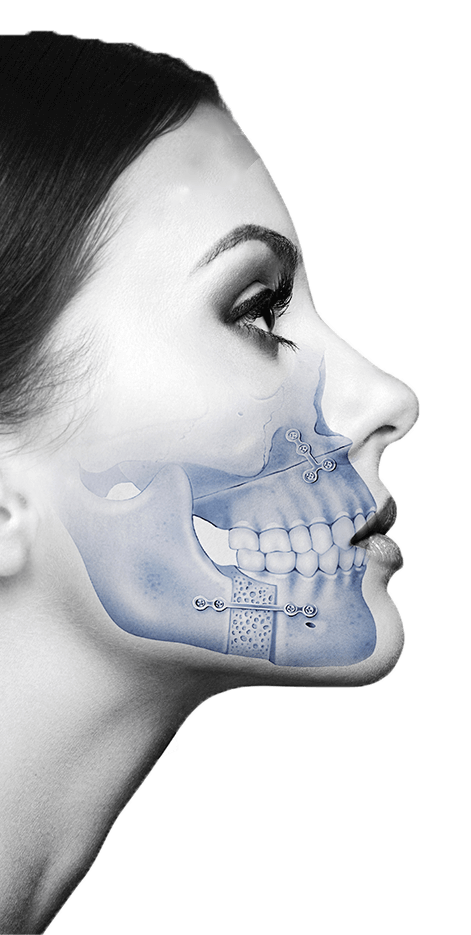Long-Face Syndrome, or facial hyperdivergence, is a disproportion of facial features by which an elongated face impression is created, even if its dimensions are normal. The said impression may be caused by one of the following factors in isolation or in combination:
- Vertical maxillary excess (gingival smile)
- Vertical excess of jaw (large chin)
- Open bite (lack of contact between the anterior teeth)
- Narrow face (face length is normal, but amplitude is lacking)
- Lack of definition between neck and chin (neck is perceived as a continuation of the face)
How to know if I have long face syndrome?
Making a simple visual analysis of our face, most of us will be able to determine if we suffer from long face syndrome: the face gives the impression of being too long and in many cases, the patient has a gummy smile.


How to correct long face syndrome?
Orthognathic surgery is the treatment indicated in most cases to correct this malformation. The intervention may include the following isolated or combined strategies: maxillary impaction, chin reduction, or anti-clockwise rotation of the occlusal plane. It should be said that with this surgery, the aim is not to "shorten" the face, but to make the necessary bone movements to achieve a harmonization of the patient's features.
When the proportions of maxilla and mandible are correct, and the vertical excess is due to a very long chin, then a mentoplasty is recommended. After surgery, patient's features are much more balanced and harmonious, and the gummy smile disappears.
Prof. Hernandez Alfaro presented the definition and treatment of this syndrome in the article Syndrome d'hyperdivergence faciale, in the prestigious scientific journal EDP Sciences, where the diagnostic keys of this problem of facial aesthetics are provided and the minimally invasive surgical procedures developed by the Maxillofacial Institute for the treatment of the long face are reviewed .
Video: Orthognathic surgery: aesthetic or functional surgery?
Related: Minimally invasive surgery








